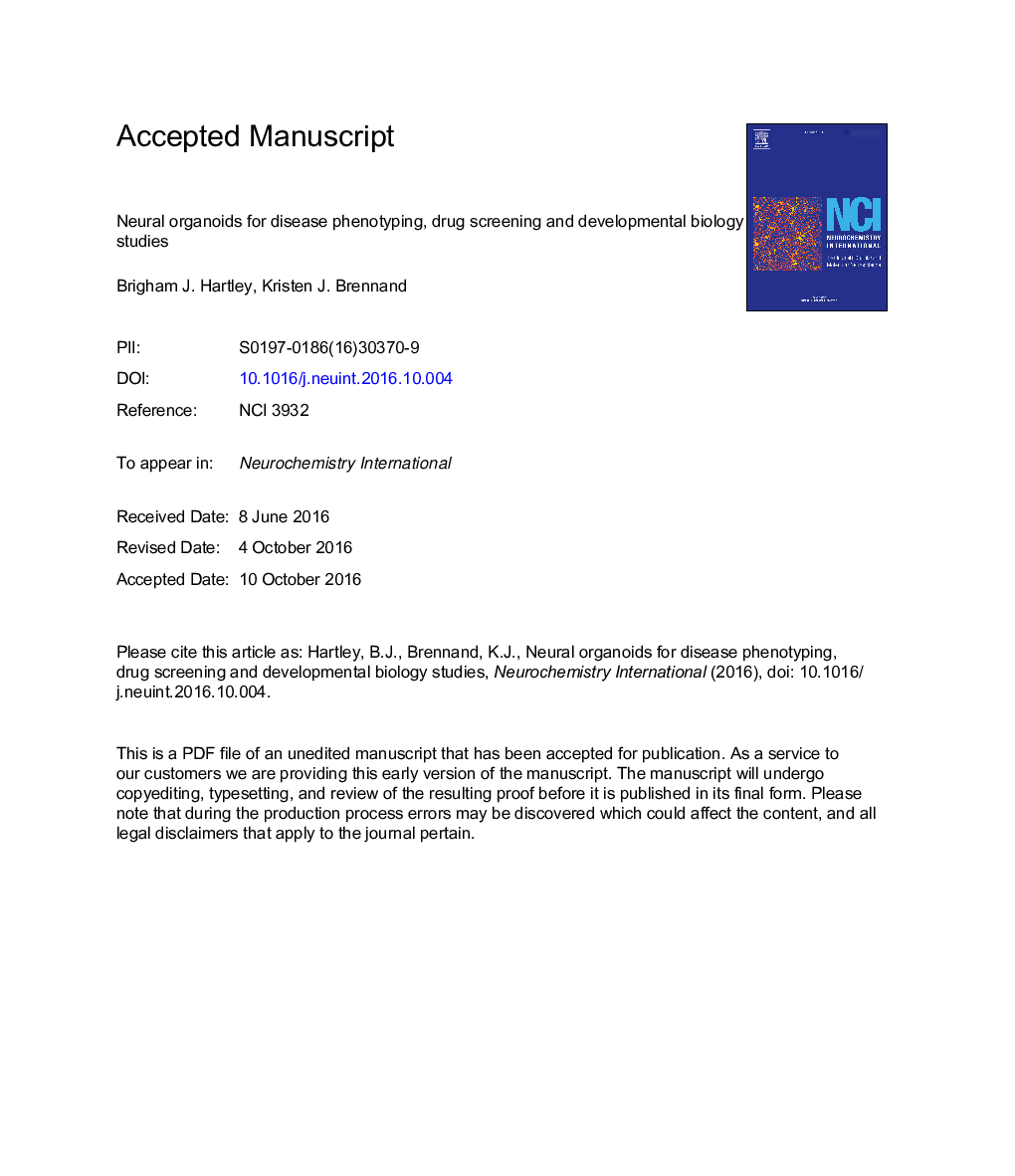| Article ID | Journal | Published Year | Pages | File Type |
|---|---|---|---|---|
| 5534750 | Neurochemistry International | 2017 | 17 Pages |
Abstract
Human induced pluripotent stem cells (hiPSCs) can theoretically yield limitless supplies of cells fated to any cell type that comprise the human organism, making them a new tool by which to potentially overcome caveats in current biomedical research. In vitro derivation of central nervous system (CNS) cell types has the potential to provide material for drug discovery and validation, safety and toxicity assays, cell replacement therapy and the elucidation of previously unknown disease mechanisms. However, current two-dimensional (2D) CNS differentiation protocols do not faithfully recapitulate the spatial organization of heterogeneous tissue, nor the cell-cell interactions, cell-extracellular matrix interactions, or specific physiological functions generated within complex tissue such as the brain. In an effort to overcome 2D protocol limitations, there have been advancements in deriving highly complicated 3D neural organoid structures. Herein we provide a synopsis of the derivation and application of neural organoids and discuss recent advancements and remaining challenges on the full potential of this novel technological platform.
Keywords
Cerebral organoidsThree-dimensionalZIKVESCshiPSCsHCsNPCsRNA interferenceRNAiγ-aminobutyric acidembryoid bodyCNStwo-dimensionalHuman induced pluripotent stem cellsEmbryonic stem cellsNeural progenitor cellscentral nervous systemDrug screeningDisease modelingBMPZika virusBone morphogenetic proteinGABA
Related Topics
Life Sciences
Biochemistry, Genetics and Molecular Biology
Cell Biology
Authors
Brigham J. Hartley, Kristen J. Brennand,
